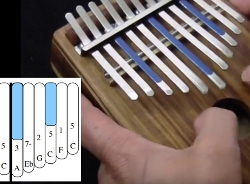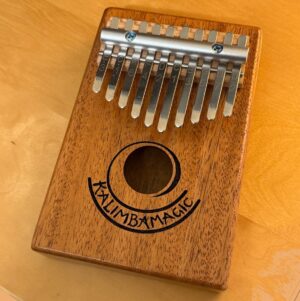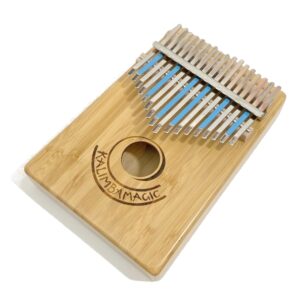
TIP: Exploring Exotic Pentatonic Tunings – p11
Is this the end, or the beginning? This series of tips is a bit different from what I have done in the past. I suppose there are many ways to think about the notes on a kalimba. I am usually very focused on the details of exactly which notes to play and when to play them. The series of tips that is just ending represents a higher level view, yet is still technical in nature. While this way of looking at music will not instruct you to play any one song, it could transform your entire understanding of music and strengthen every song you play from now on. I hope





